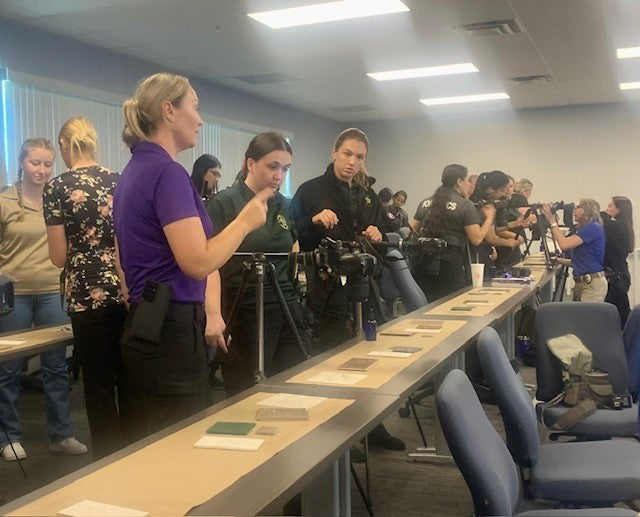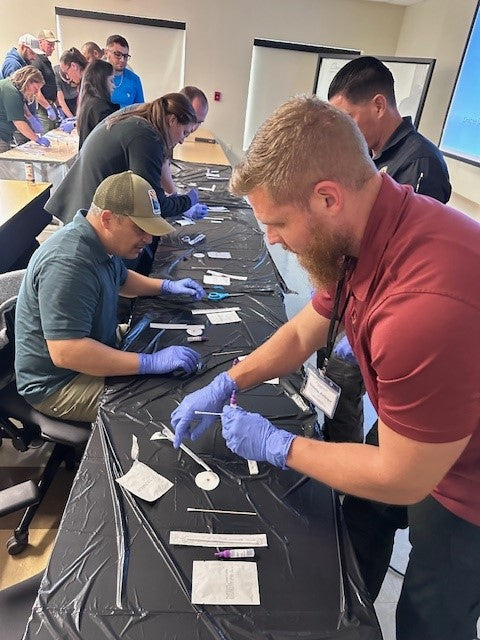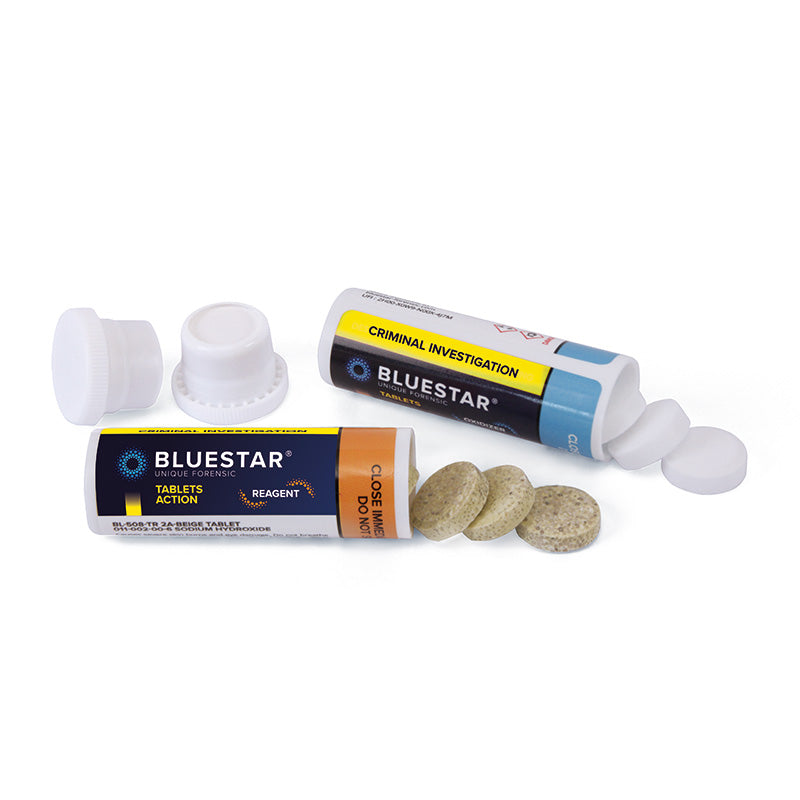
What is BLUESTAR® ?
BLUESTAR is a blood developer that allows the detection of invisible blood traces.
- Very easy to use and non-toxic.
- It does not destroy DNA.
- Its extreme sensitivity allows the detection of cleaned or washed blood traces.
- It is also used in archaeological research.
BLUESTAR is the leader in its market and is used in more than 95 countries around the world to solve numerous investigations.

The History
The first experiments were performed by Specht in 1937. Grodsky proposed in 1951 a field kit called “Kit Luminol” used by investigators to detect blood traces at crime scenes. This formula contains sodium perborate, which is a toxic molecule. The light reaction obtained with this composition can be photographed in complete darkness. The shelf life of the preparation is short.
In 2000, Jean-Marc Lefebvre-Despeaux, president of BLUESTAR, asked Loïc Blum, professor of biochemistry, to find a new formula using the molecule “luminol” (3-aminophthalhydrazide), which would overcome the disadvantages of the old compositions. Blum discovered this new formula which was named “BLUESTAR”, which eliminated the disadvantages associated with other luminol-based reagents.
BLUESTAR can be used to detect minute traces, but also very old ones. It is used in archaeology to detect traces of blood dating back hundreds of years.

Usage
BLUESTAR is particularly easy to prepare and use.
To obtain a BLUESTAR solution, simply dissolve tablets in water. (See the products)
Application
BLUESTAR solution can be applied and reacts on all types of surfaces. For smooth, non-porous surfaces, we recommend using the BLUESPRAY to avoid altering the shape of the mark.
Sensitivity
Unlike conventional luminol, total darkness is not required when using BLUESTAR. Its long-lasting luminescence makes it easy to photograph the revealed stain. Investigators can observe the positive reaction of BLUESTAR without the need of additional equipment.
Performance
-
Bleach
Performance of BLUESTAR on bleach and bleached bloodstains:
Studies have been conducted by the Nantes University Hospital on various dilutions of bloodstains with bleach added (9.6% and 0.48% concentration) with the following conclusions: Bleach does not prevent the subsequent detection of bloodstains with BLUESTAR.
After bleaching and washing in a washing machine of blood stains with different concentrations and dilutions of 9.6% and 0.48% bleach, the stains are always revealed by BLUESTAR.
-
Other surfaces
BLUESTAR performance on other substrates:
Most materials provide excellent results.
A variety of substrates/materials, both porous and non-porous, natural and synthetic were tested (see study):
- iron and other metals
- various plastics
- fabrics
- papers
- stones
- various coatings
-
Ancient blood
Performance of BLUESTAR® on old blood:
BLUESTAR has demonstrated its detection power on very old blood. At this date, the oldest human blood detected by BLUESTAR is that of two Confederate soldiers killed during the battle of Gettysburg!
BLUESTAR Forensic can help investigators long after a crime has been committed.
It is also used in archaeology and has revealed blood traces dating back 7000 to 8000 years.
False positives
Bleach alone is a false positive because it has a characteristic chemiluminescence. It does not, however, prevent the detection of traces of blood and the confusion between blood and bleach is possible with a little practice. The reaction is much more short-lived on bleach. Other household, food or chemical products can cause false positives, but most of them are easily identified by a well-trained technician.


